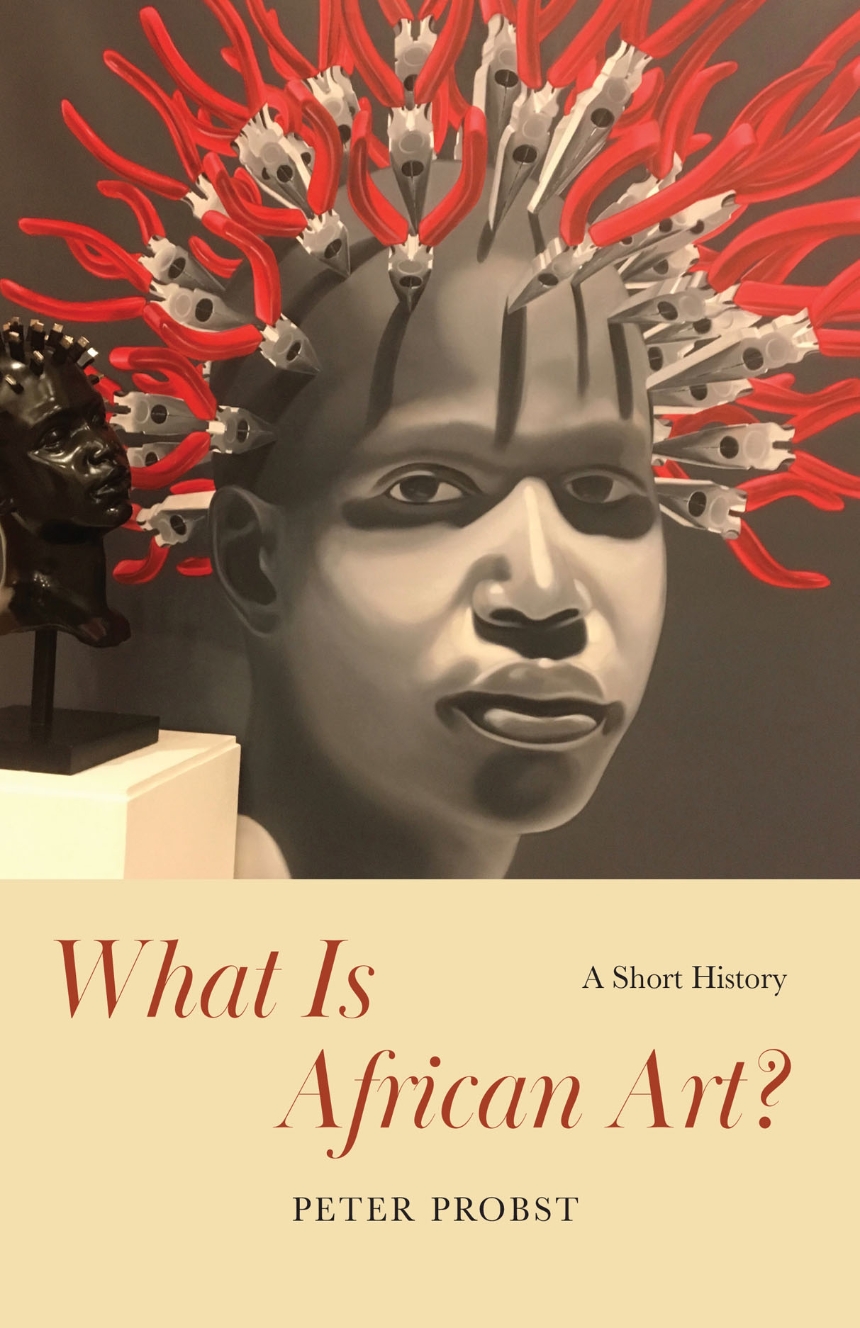What Is African Art?
A Short History
A history of the evolving field of African art.
This book examines the invention and development of African art as an art historical category. It starts with a simple question: What do we mean when we talk about African art? By confronting the historically shifting answers to this question, Peter Probst identifies “African art” as a conceptual vessel that manifests wider societal transformations.
What Is African Art? covers three key stages in the field’s history. Starting with the late nineteenth through the mid-twentieth centuries, the book first discusses the colonial formation of the field by focusing on the role of museums, collectors, and photography in disseminating visual cultures as relations of power. It then explores the remaking of the field at the dawn of African independence with the shift toward contemporary art and the rise of Black Atlantic studies in the 1970s and 1980s. Finally, it examines the post- and decolonial reconfiguration of the field driven by questions of representation, repair, and restitution.
This book examines the invention and development of African art as an art historical category. It starts with a simple question: What do we mean when we talk about African art? By confronting the historically shifting answers to this question, Peter Probst identifies “African art” as a conceptual vessel that manifests wider societal transformations.
What Is African Art? covers three key stages in the field’s history. Starting with the late nineteenth through the mid-twentieth centuries, the book first discusses the colonial formation of the field by focusing on the role of museums, collectors, and photography in disseminating visual cultures as relations of power. It then explores the remaking of the field at the dawn of African independence with the shift toward contemporary art and the rise of Black Atlantic studies in the 1970s and 1980s. Finally, it examines the post- and decolonial reconfiguration of the field driven by questions of representation, repair, and restitution.
248 pages | 91 halftones | 6 x 9 | © 2022
Reviews
Table of Contents
Introduction
Part I
1. Forming a Field: Colonial Collecting, Racial Omissions, and National Rivalries
2. Celebrating Form: From Primitive to Primitivism
3. Creating Visibility and Value: Photography and Its Effects
Part II
4. Discovering the African Artist: Tradition and Tribality in the Cold War Era
5. Acknowledging the Contemporary: New Forms, New Actors
6. Extending the Horizon: Africa in the Americas
Part III
7. Intervening the Canon: The Postmodern, the Popular, and the Authentic
8. Challenging Representation: Postcolonial Critique and Curation
9. Undoing the Empire: Duress, Defiance, and Decolonial Futures
Epilogue
Acknowledgments
Notes
Index
Part I
1. Forming a Field: Colonial Collecting, Racial Omissions, and National Rivalries
2. Celebrating Form: From Primitive to Primitivism
3. Creating Visibility and Value: Photography and Its Effects
Part II
4. Discovering the African Artist: Tradition and Tribality in the Cold War Era
5. Acknowledging the Contemporary: New Forms, New Actors
6. Extending the Horizon: Africa in the Americas
Part III
7. Intervening the Canon: The Postmodern, the Popular, and the Authentic
8. Challenging Representation: Postcolonial Critique and Curation
9. Undoing the Empire: Duress, Defiance, and Decolonial Futures
Epilogue
Acknowledgments
Notes
Index
